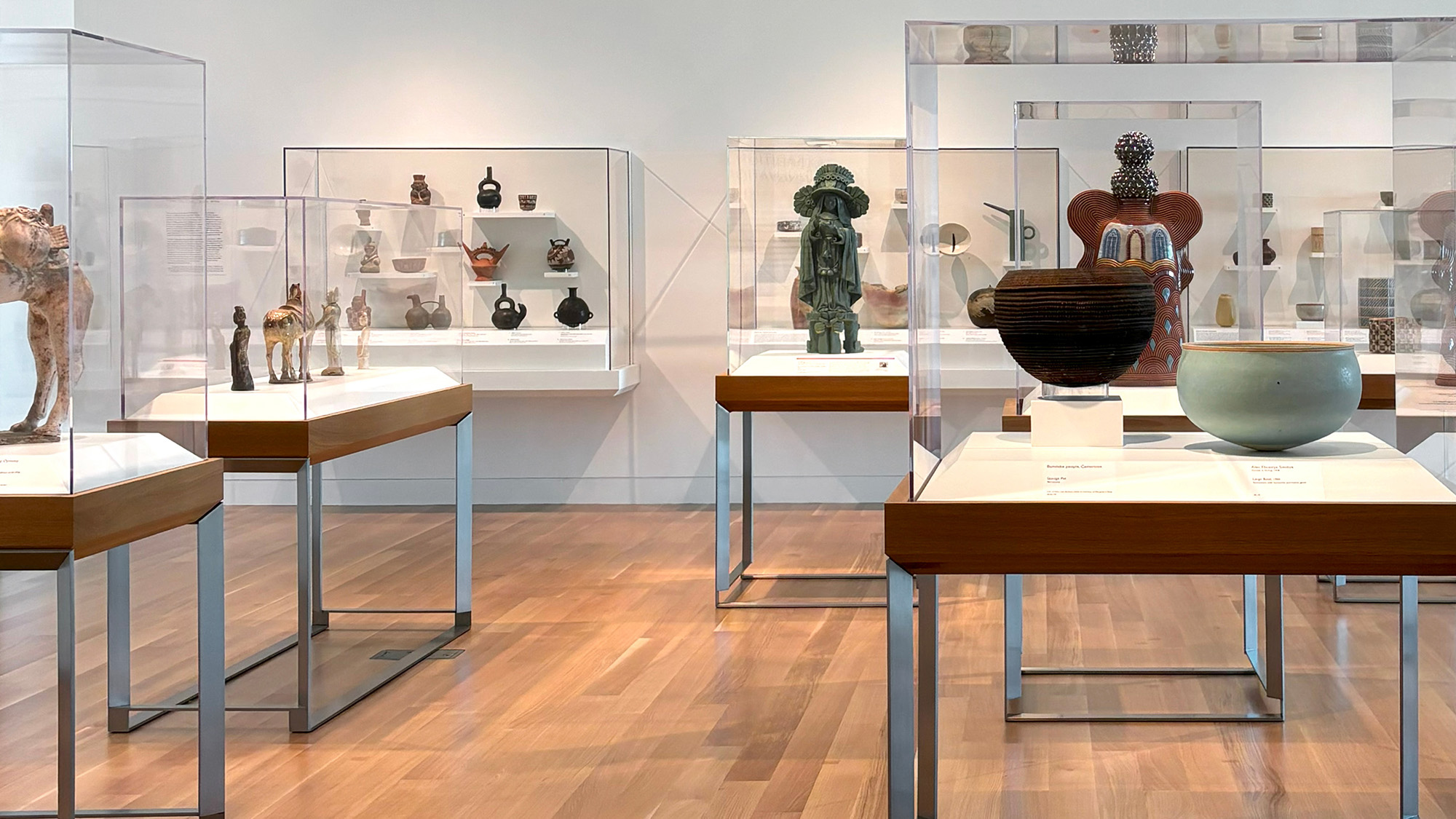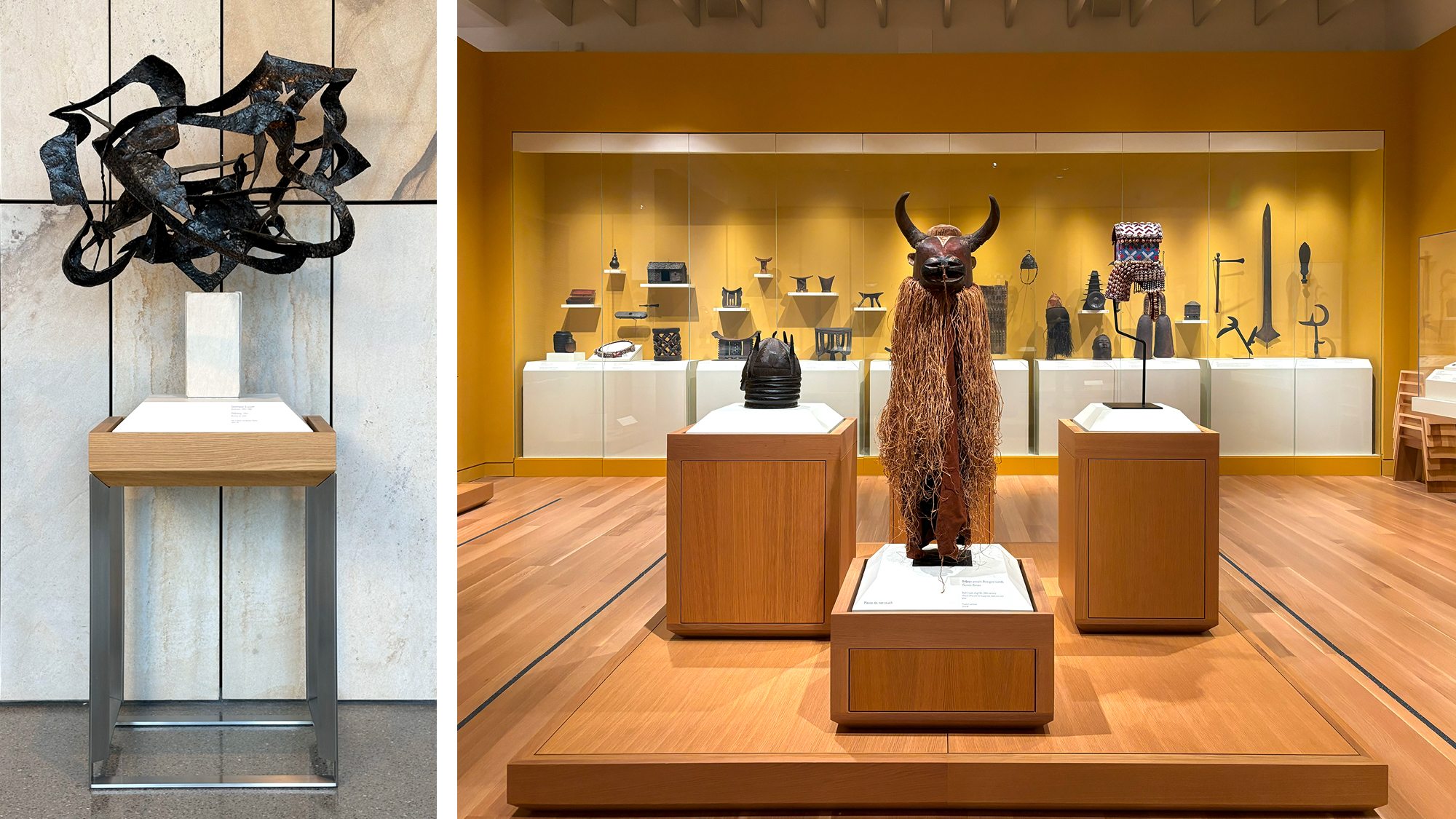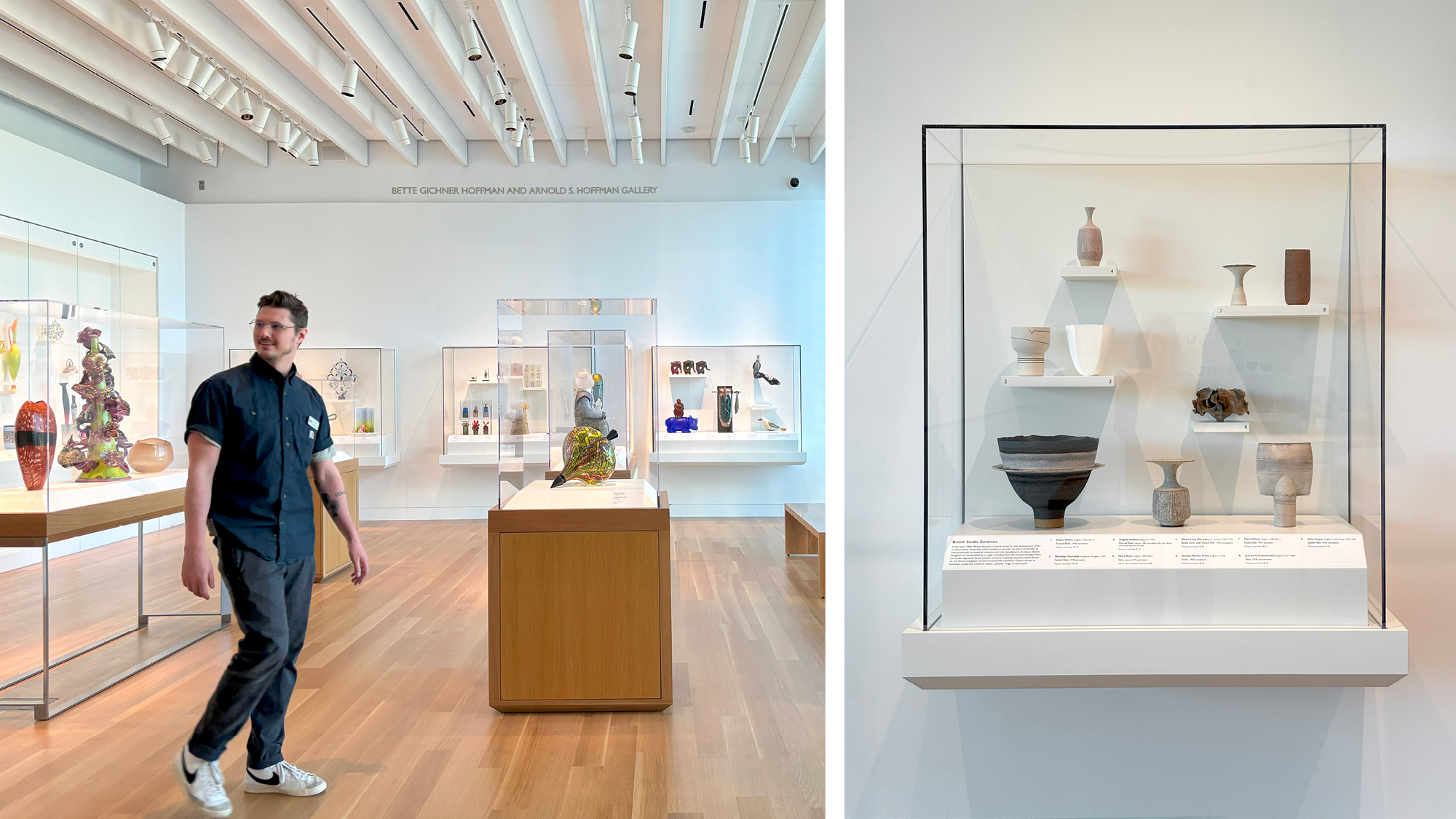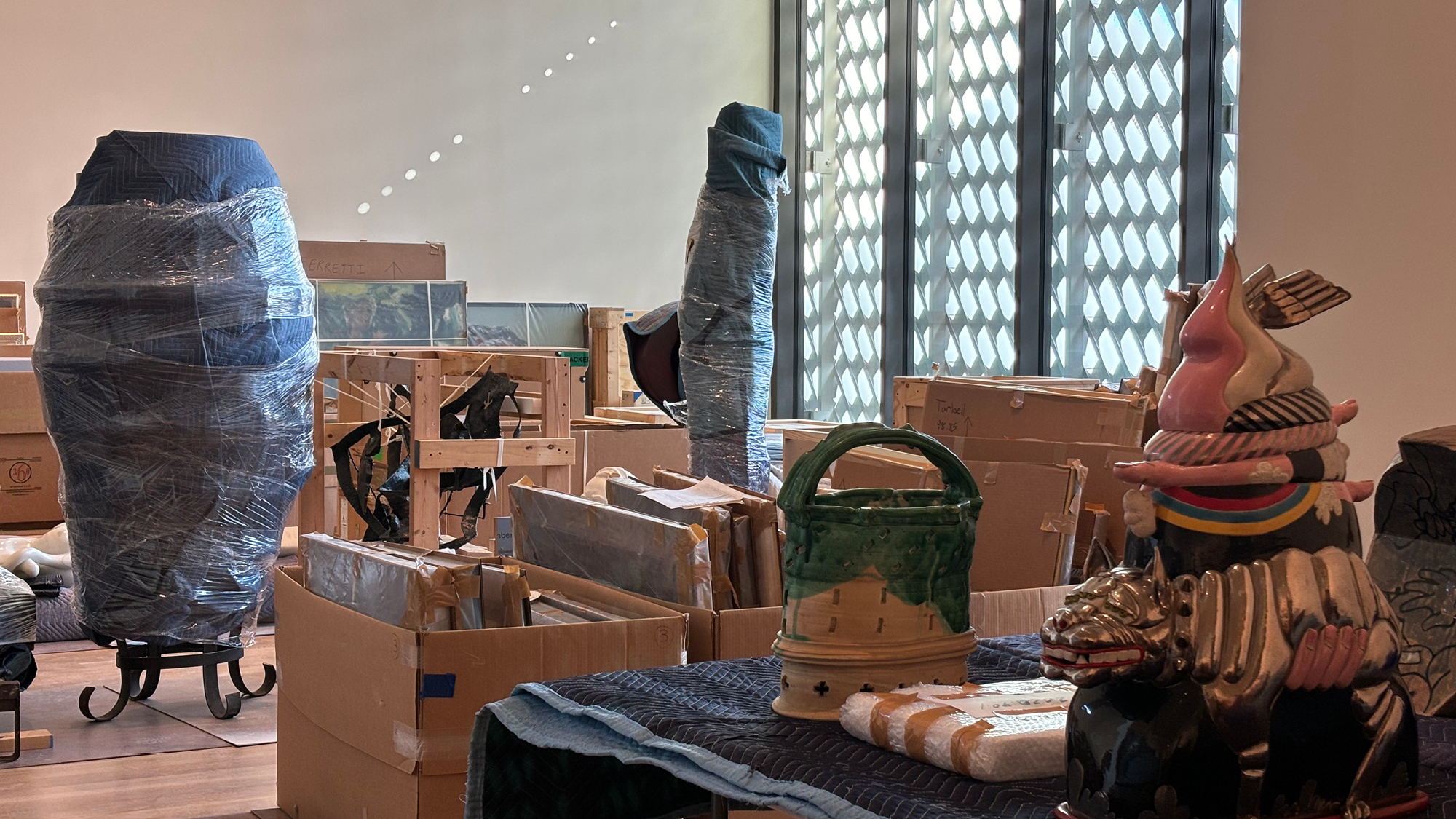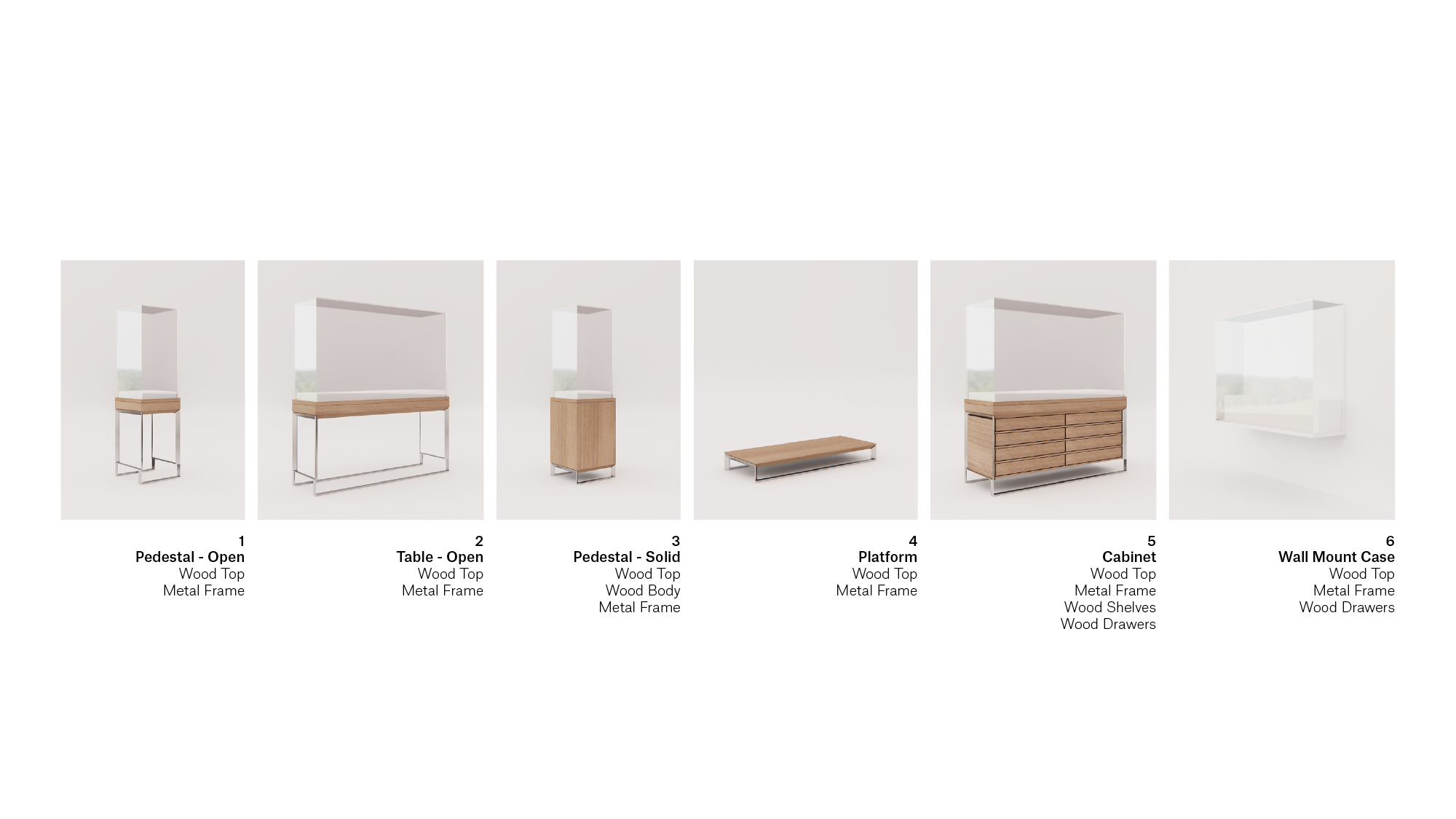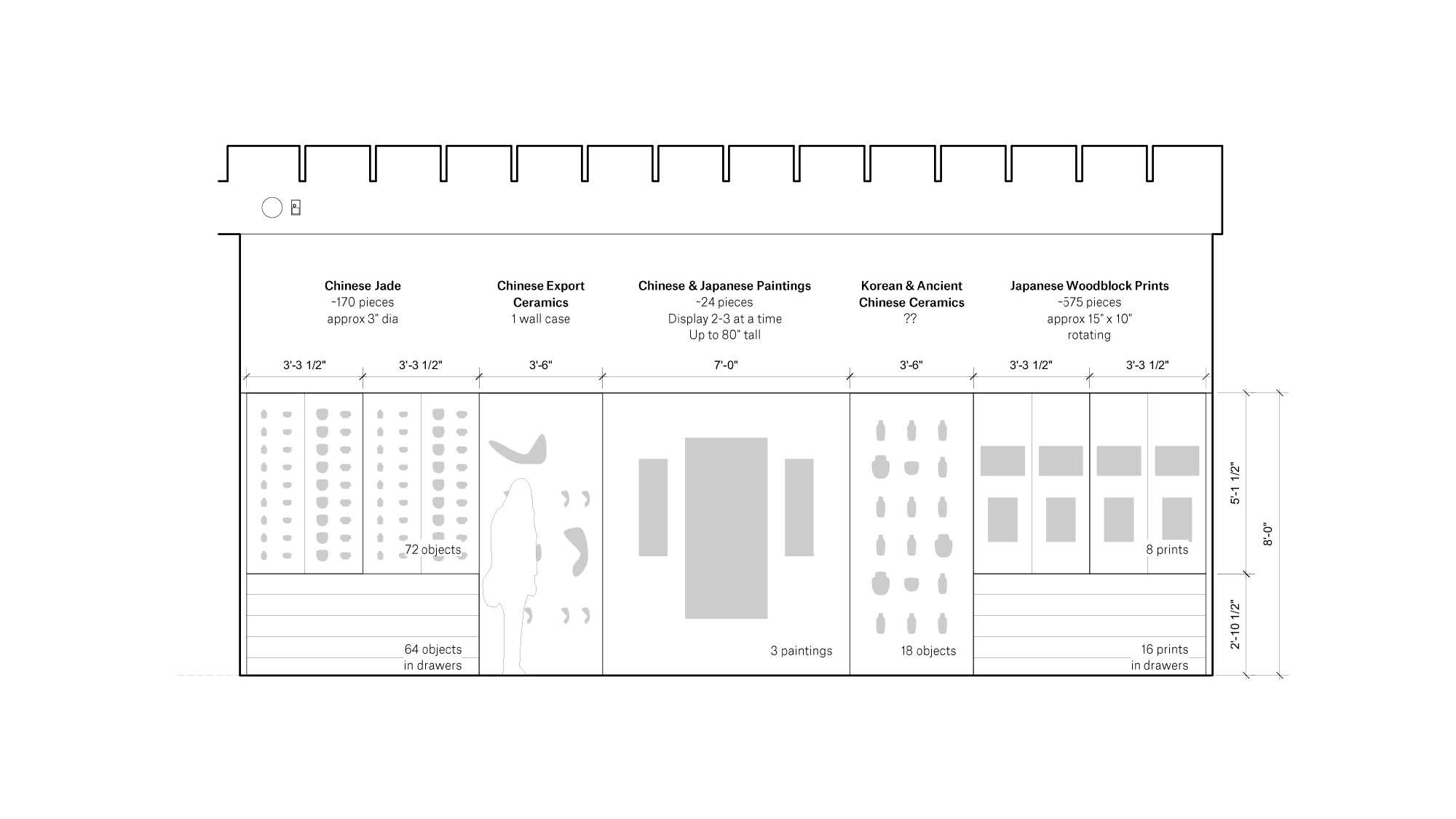As part of the new Palmer Museum of Art at Penn State University, Allied Works developed a comprehensive exhibition design strategy in close collaboration with the museum director and key curatorial staff. In addition to the overall strategy, the firm designed a suite of custom exhibition furniture tailored to the museum’s diverse collection, which includes historical artifacts from American and global cultures, along with a notable array of studio glass and ceramic works. The exhibition design was meant as a connective tissue between the architecture and the collection—seamlessly integrating with the building while elevating and amplifying the art it holds.
A series of exhibit furniture typologies and specifications were developed in-house, ranging from pedestals and platforms to display tables with integrated drawers and built-in wall cases. While the design draws inspiration from the architectural materials and detailing of the building, it reinterprets them in ways specific to furniture—articulating a distinct yet complementary visual language.
Two primary furniture systems were created: one featuring brushed stainless steel legs paired with oak tops, and the other composed of solid wood bases rendered either in oak or painted to match the gallery walls. The metal leg variant references traditional furniture forms—such as feet and stretchers—while abstracting them in a way that shifts perception as viewers move through the space, oscillating between a sense of lightness and structure. The resulting system is highly adaptable, offering curatorial flexibility while maintaining a cohesive and immersive gallery experience.
